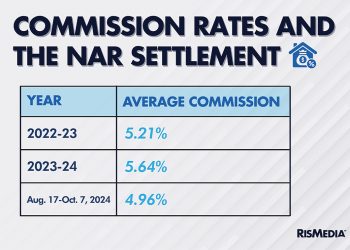The current market environment has increased demand for housing, and that may not be going away for a while. According to a new Zillow report, low rates of household formation since the Great Recession have caused 5.7 million “missing” households. These households represented people who historically would have moved into their own home, but have been unable to do so, and so the market is still catching up to fill these gaps.
This could point to changing trends, as fewer Americans across all age groups and ethnicities are forming households, instead continuing to live with their parents into adulthood or renting with roommates and/or partners.
The group with the largest number of missing households relative to 2006 is white 25- to 29-year-olds—dropping 46.1 percent to 41.3 percent. The group that’s struggled the most to form households since 2006 are Black 25- to 29-year-olds—falling from 48.4 percent to 39.3 percent.
If rates had remained at pre-Great Recession levels, there would currently be 5.7 million more U.S. households today, and even with a healthy recovery, it could take some time to make up those missing numbers. Additionally, this inventory shortage has been exacerbated by depressed construction that’s struggling due to a shortage of buildable land and labor, according to Zillow.
“The housing crash set back millions of Americans on the path to having their own place to call home, whether they owned or rented it,” said Zillow senior economist Jeff Tucker. “Between a wave of foreclosures, rising rents and underbuilding of new homes, the housing market became much harder to crack into from 2006 to 2017. The last two years showed that when the economy is firing on all cylinders and most Americans have access to decent jobs, more of them will be able to find a home of their own. The sooner we can put the pandemic and 2020 recession behind us, the sooner access to housing can resume its expansion.”
“Solid fundamentals remain for the housing market, including low interest rates and high consumer demand. However, financing to invest in lots, land and inventory has been a significant challenge for private builders,” said Todd Pyatt, owner of Pyatt Builders. “Builders are still reacting to land, material and labor constraints that have dampened construction over the past decade or so. While the new home market has had its best year since the downturn, there will continue to be a slower recovery due to those constraints.”
Source: Zillow











